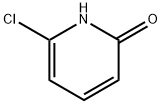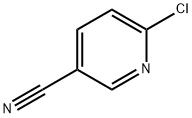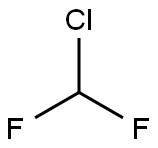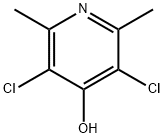6-Chloropyridn-2-ol
Synonym(s):6-Chloro-2-pyridinol
- CAS NO.:16879-02-0
- Empirical Formula: C5H4ClNO
- Molecular Weight: 129.54
- MDL number: MFCD00955632
- EINECS: 240-909-1
- SAFETY DATA SHEET (SDS)
- Update Date: 2024-12-18 14:08:52

What is 6-Chloropyridn-2-ol?
Chemical properties
White powder
The Uses of 6-Chloropyridn-2-ol
6-chloro-2-hydroxypyridine was used to study the synthesis, electrochemistry, spectroscopic properties and X-ray crystal structure of Os2Cl(chp)4 (chp = 6-chloro-2- hydroxypyridinate) complex. It undergoes melt reaction with Os2(O2CCH3)4CI2 at 145°C to yield Os2CI4(chp) and Os2Cl(chp)4.
The Uses of 6-Chloropyridn-2-ol
6-chloro-2-hydroxypyridine was used to study the synthesis, electrochemistry, spectroscopic properties and X-ray crystal structure of Os2Cl(chp)4 (chp = 6-chloro-2- hydroxypyridinate) complex.
General Description
6-chloro-2-hydroxypyridine undergoes melt reaction with Os2(O2CCH3)4CI2 at 145°C to yield Os2CI4(chp) and Os2Cl(chp)4.
Properties of 6-Chloropyridn-2-ol
| Melting point: | 128-130 °C(lit.) |
| Boiling point: | 206 °C |
| Density | 1.35 |
| refractive index | 1.4510 (estimate) |
| Flash point: | 163°C |
| storage temp. | Keep in dark place,Sealed in dry,Room Temperature |
| pka | 7.33±0.10(Predicted) |
| form | powder to crystal |
| color | White to Orange to Green |
| BRN | 108665 |
| CAS DataBase Reference | 16879-02-0(CAS DataBase Reference) |
| NIST Chemistry Reference | 6-Chloro-2-pyridinol(16879-02-0) |
| EPA Substance Registry System | 6-Chloro-2(1H)-pyridinone (16879-02-0) |
Safety information for 6-Chloropyridn-2-ol
| Signal word | Warning |
| Pictogram(s) |
 Exclamation Mark Irritant GHS07 |
| GHS Hazard Statements |
H315:Skin corrosion/irritation H319:Serious eye damage/eye irritation H335:Specific target organ toxicity, single exposure;Respiratory tract irritation |
| Precautionary Statement Codes |
P261:Avoid breathing dust/fume/gas/mist/vapours/spray. P264:Wash hands thoroughly after handling. P264:Wash skin thouroughly after handling. P271:Use only outdoors or in a well-ventilated area. P280:Wear protective gloves/protective clothing/eye protection/face protection. P302+P352:IF ON SKIN: wash with plenty of soap and water. P305+P351+P338:IF IN EYES: Rinse cautiously with water for several minutes. Remove contact lenses, if present and easy to do. Continuerinsing. |
Computed Descriptors for 6-Chloropyridn-2-ol
| InChIKey | CLNNBQDAAGDAHI-UHFFFAOYSA-N |
New Products
Tert-butyl bis(2-chloroethyl)carbamate 4-Methylphenylacetic acid N-Boc-D-alaninol N-BOC-D/L-ALANINOL N-octanoyl benzotriazole 3-Morpholino-1-(4-nitrophenyl)-5,6-dihydropyridin- 2(1H)-one Furan-2,5-Dicarboxylic Acid DIETHYL AMINOMALONATE HYDROCHLORIDE 1,1’-CARBONYLDIIMIDAZOLE R-2-BENZYLOXY PROPIONIC ACID 1,1’-CARBONYLDI (1,2-4 TRIAZOLE) N-METHYL INDAZOLE-3-CARBOXYLIC ACID (2-Hydroxyphenyl)acetonitrile 4-Bromopyrazole 5-BROMO-2CYANO PYRIDINE 5,6-Dimethoxyindanone 5-broMo-2-chloro-N-cyclopentylpyriMidin-4-aMine 2-(Cyanocyclohexyl)acetic acid 4-methoxy-3,5-dinitropyridine 1-(4-(aminomethyl)benzyl)urea hydrochloride 2-aminopropyl benzoate hydrochloride diethyl 2-(2-((tertbutoxycarbonyl)amino) ethyl)malonate tert-butyl 4- (ureidomethyl)benzylcarbamate Ethyl-2-chloro((4-methoxyphenyl)hydrazono)acetateRelated products of tetrahydrofuran








You may like
-
 16879-02-0 2-Chloro-6-Hydroxypyridine 99%View Details
16879-02-0 2-Chloro-6-Hydroxypyridine 99%View Details
16879-02-0 -
 6-chloro-2-pyridinol CAS 16879-02-0View Details
6-chloro-2-pyridinol CAS 16879-02-0View Details
16879-02-0 -
 6-Chloro-2-hydroxypyridine CAS 16879-02-0View Details
6-Chloro-2-hydroxypyridine CAS 16879-02-0View Details
16879-02-0 -
 6-Chloro-2-hydroxypyridine CAS 16879-02-0View Details
6-Chloro-2-hydroxypyridine CAS 16879-02-0View Details
16879-02-0 -
 1975-50-4 98%View Details
1975-50-4 98%View Details
1975-50-4 -
 14714-50-2 (2-Hydroxyphenyl)acetonitrile 98+View Details
14714-50-2 (2-Hydroxyphenyl)acetonitrile 98+View Details
14714-50-2 -
 118753-70-1 98+View Details
118753-70-1 98+View Details
118753-70-1 -
 733039-20-8 5-broMo-2-chloro-N-cyclopentylpyriMidin-4-aMine 98+View Details
733039-20-8 5-broMo-2-chloro-N-cyclopentylpyriMidin-4-aMine 98+View Details
733039-20-8
Statement: All products displayed on this website are only used for non medical purposes such as industrial applications or scientific research, and cannot be used for clinical diagnosis or treatment of humans or animals. They are not medicinal or edible.